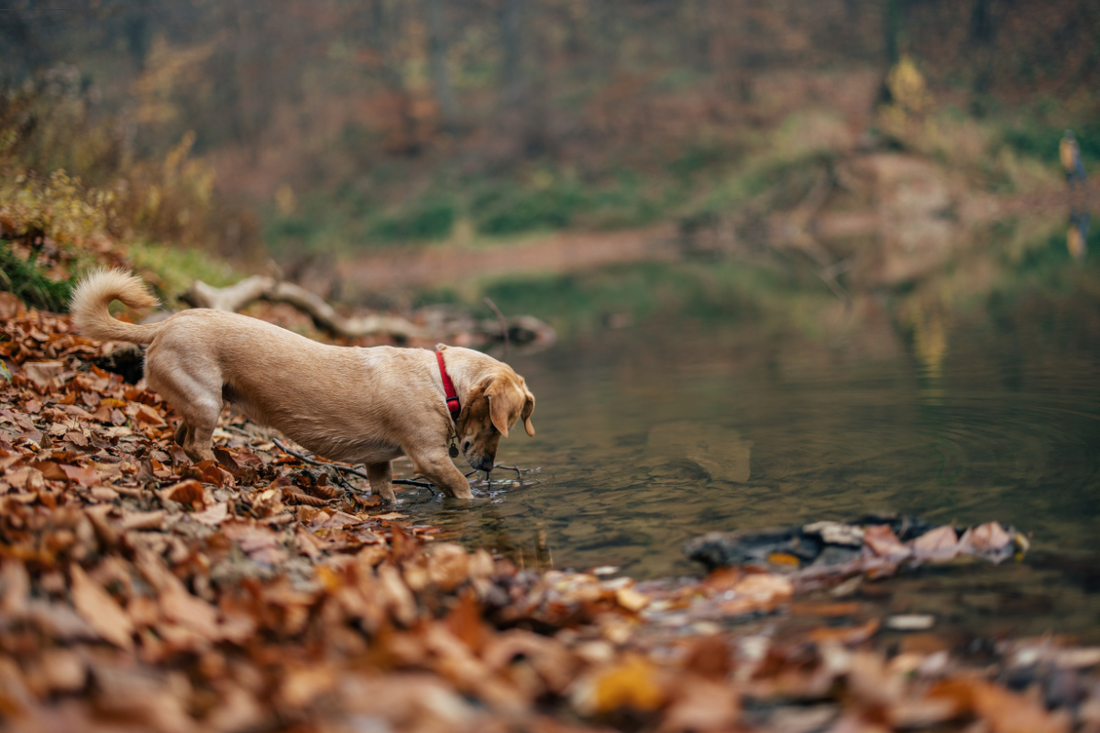
Cold Trail Hydration: Getting Your Dog to Drink in Chilly Weather
Share
When temperatures drop, many hikers assume hydration becomes less of a concern for their dogs. The truth is, dehydration can be just as common in cold weather as in summer heat. Dry winter air, increased energy use for warmth, and reduced thirst drive all contribute to this overlooked issue.
This guide covers how to recognize cold-weather dehydration, encourage water intake, and prepare for safe and successful fall and winter hikes with your dog.
Why Dogs Dehydrate in Cold Weather
Several factors make hydration tricky on cold hikes:
- Lower thirst drive: Dogs may not feel as thirsty in cold temperatures even though their bodies still lose moisture through panting and activity.
- Dry air: Cold air holds less moisture than warm air. Dogs lose more water through respiration without realizing it.
- Increased energy use: Dogs burn more calories and water staying warm during cold-weather activity.
- Frozen water: If you bring water from home or find a natural source on the trail, it may freeze or become unappealing to drink.
Signs of Dehydration in Cold Conditions
Look for these early signs that your dog may not be getting enough fluids:
- Dry nose, mouth, or gums
- Lethargy or slower movement than usual
- Skin that doesn’t snap back quickly when gently pulled
- Thick saliva or sticky gums
- Sunken eyes
Severe dehydration can lead to muscle cramps, confusion, or collapse. Always intervene early.
How to Encourage Your Dog to Drink on Cold Hikes
Here are proven, vet-backed strategies for keeping your dog hydrated in cold weather:
1. Offer Lukewarm Water
Cold water is less appealing to many dogs when it’s already chilly outside. Use an insulated bottle to keep water lukewarm. If your dog is reluctant to drink, this small temperature adjustment often helps.
2. Flavor the Water
Adding a small amount of low-sodium chicken broth or bone broth to your dog’s water can make it more enticing. Choose broths with no onions, garlic, or high salt content. Some dogs respond better to warm water with a spoonful of their usual wet food mixed in.
3. Feed Moisture-Rich Food on Trail Breaks
If your dog eats kibble, consider adding a small amount of canned food or rehydrated freeze-dried meals during trail breaks. This adds both calories and water without requiring them to drink directly.
4. Carry Water in a Wide-Mouth, Insulated Container
Thin water bottles or hydration bladders may freeze in very cold conditions. A wide-mouth insulated thermos is better for preventing freezing and makes it easier to pour into a collapsible bowl.
5. Avoid Snow as a Substitute
Dogs eating snow may ingest bacteria or other contaminants. Snow also cools their core temperature and doesn’t provide reliable hydration. Use it only in emergencies and never as your primary water source.
6. Offer Water Frequently
Do not wait until your dog appears thirsty. Offer water at every break, ideally every 30 to 60 minutes depending on exertion and conditions. Encourage small, frequent sips rather than waiting for one large drink.
Cold-Weather Hydration Packing Checklist
- Insulated water bottle or thermos with lukewarm water
- Collapsible, non-metal bowl (metal can be uncomfortable in cold temperatures)
- Low-sodium broth or water flavor additive (dog-safe)
- Small spoon or squeeze bottle for mixing if needed
- Moisture-rich trail snacks or rehydrated food
Optional: A small towel to wipe down water spills to prevent chill, especially if the dog has a short coat.
After the Hike: Rehydration and Monitoring
Once you’re home or back at your vehicle, offer water again. Some dogs prefer to drink once they feel safe and warm. You can also offer another broth-rich meal to encourage recovery hydration.
Monitor your dog for signs of fatigue or dry nose and gums even after the hike is over. Dogs can continue to dehydrate post-activity, especially if they’ve been exposed to wind or snow.
Final Thoughts
Cold-weather hydration takes planning, but it’s simple once you’re in the habit. Recognizing that thirst cues diminish in cool temperatures is the first step. By bringing lukewarm water, encouraging regular sips, and offering moisture through food, you can keep your dog safely hydrated on even the coldest trails.
